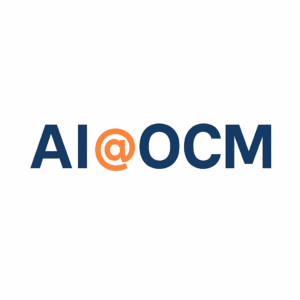Introduction
Artificial Intelligence (AI) is transforming industries at an unprecedented pace. Companies that successfully integrate AI into their operations are seeing substantial benefits, including higher productivity, improved efficiency, and new revenue streams. Yet, despite these promises, a staggering over two-thirds of AI transformations fall short of expectations, leading to wasted resources, frustration, and skepticism about AI’s true value.
According to a recent BCG report, successful AI adoption follows the 10-20-70 rule:
- 10% of AI success comes from algorithms.
- 20% is derived from the right technology and data infrastructure.
- 70% is tied to people and processes.
This means that AI is not just a technology challenge, but a change management challenge. Without organizational change management (OCM), even the most advanced AI tools will fail to deliver value. In this article, we’ll explore why 70% of AI success depends on people, the barriers to AI adoption, and how change management can bridge the gap.
The Myth: AI is Just a Technology Issue
Many organizations mistakenly believe that AI adoption is purely a technical exercise. They assume that simply buying AI tools or hiring data scientists will generate automatic improvements in business performance.
However, the reality is different. While the right AI algorithms and tech stack are necessary, they don’t guarantee adoption, trust, or sustained impact. Studies show that AI implementations often fail due to human and organizational challenges, not technology limitations.
Common Reasons AI Fails in Organizations
- Lack of AI Literacy & Awareness: Employees fear AI because they don’t understand how it works or how it will affect their jobs.
- Resistance to Change: Teams resist AI adoption due to concerns over job displacement, increased oversight, or unfamiliar workflows.
- Poor Leadership Alignment: AI adoption needs C-suite sponsorship, yet many leaders lack clarity on AI’s strategic value.
- Unclear Business Objectives: Organizations often invest in AI without defining clear use cases and success metrics.
- Data & Process Silos: AI requires collaboration across multiple departments, yet many businesses struggle with siloed data and workflows.
Without proper change management, these barriers prevent AI from delivering real business value.
The Reality: AI Success is a Change Management Challenge
The 10-20-70 Rule Explained
To fully unlock AI’s potential, organizations must shift focus from technology-first thinking to a people-centered transformation. The 10-20-70 rule provides a blueprint:
- 10% (Algorithms): AI models are essential but contribute the least to success without effective implementation.
- 20% (Technology & Data): AI requires robust tech infrastructure, but even the best systems fail if employees don’t trust or use them.
- 70% (People & Processes): AI’s effectiveness depends on organizational adoption, leadership support, and behavioral change.
Why People Are the Key to AI Success
- AI Requires Trust and Engagement
- Employees need to trust AI before integrating it into their daily workflows.
- AI bias and transparency concerns must be addressed through education and governance.
- Leadership Must Champion AI Initiatives
- AI adoption should not be seen as an IT project, but as an enterprise-wide transformation.
- CEOs, CFOs, CHROs, and department heads must actively advocate for AI’s benefits.
- Employees Need AI Upskilling
- Personalized training programs help employees transition from fear to confidence.
- AI should be positioned as a tool to augment human capabilities, not replace them.
- New Workflows Require Change Support
- AI-driven workflows change decision-making processes and team dynamics.
- Change managers help redesign work structures and accountability models.
The Role of Change Management in AI Adoption
1. Driving AI Awareness & Education
- Change Management Action: Run AI literacy programs across all levels of the organization.
- Why it Matters: Employees who understand AI’s value are 3X more likely to embrace its adoption.
2. Managing Workforce Resistance
- Change Management Action: Address employee fears through transparent communication and role-based AI adoption strategies.
- Why it Matters: Resistance is the #1 reason AI implementations fail. OCM helps reframe AI as an enabler, not a threat.
3. Leadership Alignment & Sponsorship
- Change Management Action: Ensure executive leaders are involved in AI strategy discussions.
- Why it Matters: C-level buy-in is critical—companies with strong leadership alignment see 50% faster AI adoption.
4. AI Governance & Ethical Frameworks
- Change Management Action: Develop AI governance models to monitor adoption, ethics, and performance.
- Why it Matters: Organizations need clear AI policies to ensure compliance, security, and unbiased decision-making.
5. Redesigning Workflows & Performance Metrics
- Change Management Action: Work with business units to integrate AI into existing processes without disruption.
- Why it Matters: Employees fear job loss—OCM can help redesign roles to incorporate AI without eliminating positions.
Key Takeaways for Business Leaders
- AI adoption is 70% about people. Companies that invest in change management, education, and leadership alignment will gain the most value from AI.
- AI is not a plug-and-play solution. AI must be embedded into culture, workflows, and strategic decision-making.
- Change managers are essential for AI success. They help businesses overcome resistance, develop governance models, and redesign processes.
- AI literacy is non-negotiable. Employees must understand AI’s role, capabilities, and limitations to use it effectively.
Conclusion: Future-Proofing AI with Change Management
AI transformation is not just a technology project—it’s an organizational shift. While AI models and technology infrastructure are important, they are useless without human adoption. Organizations that fail to address workforce concerns, leadership misalignment, and cultural resistance will see AI investments go to waste.
The solution? A robust change management strategy.
By focusing on education, transparency, governance, and leadership engagement, companies can unlock AI’s full potential while ensuring a smooth transition for employees.
If your organization is investing in AI, ask yourself:
- How are we preparing employees for AI-driven changes?
- Do we have the right AI governance and leadership alignment?
- Are we treating AI adoption as a people challenge, not just a technology challenge?
The future of AI is human-centric. Invest in change management today to ensure AI delivers real value tomorrow.






